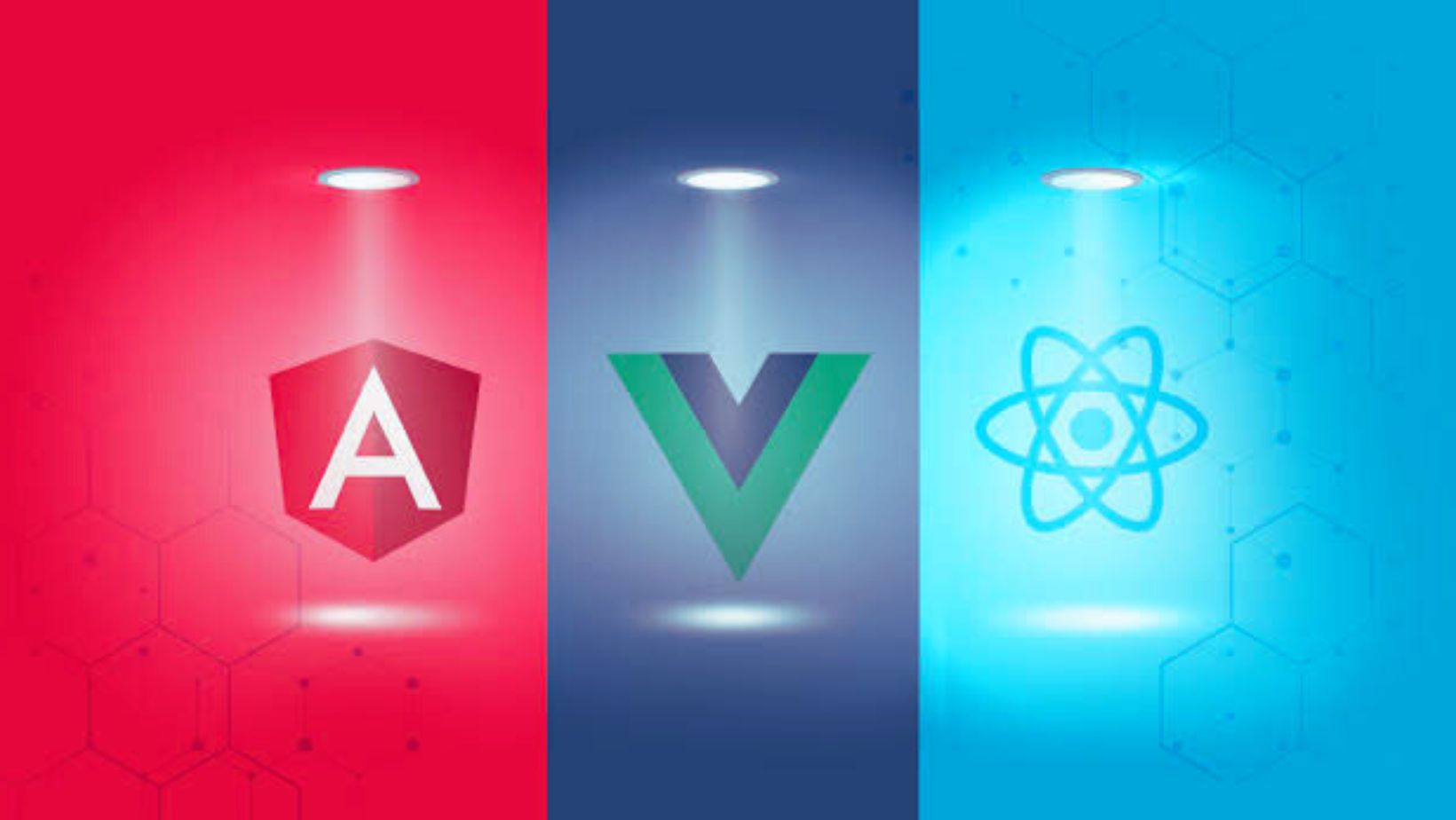Front End React Developer
Developers have a multitude of options to choose from when building modern web applications, but three of the most popular choices are Angular, Vue, and React. These powerful and versatile JavaScript frameworks have gained widespread recognition in the development community. Each of these frameworks has its own unique features and advantages, making it difficult for developers to decide which one to use for their projects. In this blog post, we will take a closer look at Angular, Vue, and React to help you understand their differences and make an informed decision about which one suits your needs the best. Angular, developed and maintained by Google, is a comprehensive framework that offers a full-featured, opinionated approach to web development. It includes a variety of features such as dependency injection, reactive programming, and routing to create robust and scalable applications. Vue, on the other hand, is a progressive framework that focuses on simplicity and ease of use. It is known for its minimalistic design and flexible architecture, allowing developers to pick and choose the features they need for their projects. Finally, React, developed by Facebook, is a component-based library that is widely used for building user interfaces. It offers a declarative and efficient way to create interactive UIs, making it a popular choice for single-page applications. In this blog, we will compare Angular, Vue, and React in terms of their architecture, performance, learning curve, community support, and ecosystem. We will also discuss their strengths and weaknesses to help you understand which framework is the best fit for your specific project requirements. By the end of this blog, you will have a clearer understanding of the differences between these three frameworks, and be better equipped to make an informed decision about which one to use for your next web development project. Learn from Edure.
Front End React Developer
Angular:
Front End React Developer
Angular is a widely-used, powerful framework for building dynamic web applications. Developed and maintained by Google, it is a popular choice for developers, especially for large and complex applications. With its robust features and capabilities, Angular allows for the creation of highly interactive and responsive applications. Its modular architecture and extensive support for tools and libraries make it an ideal choice for building scalable and maintainable web applications. Whether you are a seasoned developer or new to web development, Angular provides a comprehensive and efficient platform for creating modern web applications.Here are some of the key pros and cons of using Angular for your web development projects.
Pros of using Angular:
1. Strong community support backed by Google: Angular has a large and active community of developers, and being maintained by Google means that it benefits from the resources and expertise of one of the largest tech companies in the world. This ensures that the framework is constantly updated and improved, and there is a wealth of resources available for developers to learn from and contribute to.
2. Robust and scalable for large-scale applications: Angular’s architecture makes it well-suited for building large and complex applications. Its emphasis on components allows developers to break down their applications into smaller, reusable parts, making it easier to manage and scale as the application grows.
3. Built-in tools for testing and maintaining code quality: Angular comes with built-in support for testing, which makes it easier to write and maintain high-quality code. This is crucial for ensuring that your application is stable, performant, and bug-free.
4. Extensive documentation and a strong ecosystem of third-party libraries and tools: Angular has extensive documentation and a thriving ecosystem of third-party libraries and tools that can be easily integrated into your application. This makes it easier for developers to find solutions to common problems, add functionality to their applications, and contribute to the Angular community.
Cons of using Angular:
1. Steeper learning curve compared to other frameworks: Angular’s comprehensive feature set and complex architecture can make it more challenging for beginners to learn compared to other frameworks. However, once developers become familiar with the framework, its capabilities can lead to more efficient and maintainable code.
2. Frequent updates and breaking changes can be challenging for long-term maintenance: Because Angular is actively maintained and updated, there is a risk of breaking changes with each new release. This means that developers need to stay up-to-date with the latest changes and potentially make updates to their applications in order to keep them compatible with the newest version of Angular.
In conclusion, while Angular may have a steeper learning curve and require careful attention to updates, its robustness, scalability, and strong community support make it a powerful choice for building complex web applications. Whether you are working on a large-scale enterprise project or a smaller application with potential for growth, Angular can provide the tools and features you need to build and maintain a high-quality web application.
Front End React Developer
Vue:
Vue is a popular and user-friendly framework for building user interfaces, especially for developers who are new to front-end development. It offers simplicity, flexibility, and a gentle learning curve, making it easy for developers to get started and build small to medium-sized applications. Vue allows for the creation of reusable components and focuses on the view layer, while also integrating well with other libraries and existing projects. It is known for its progressive nature, meaning it can be incrementally adopted and used to enhance existing projects. Overall, Vue is a versatile and powerful tool for creating dynamic and interactive user interfaces.
Pros of using Vue:
1. Simple and easy to understand for new developers: Vue’s syntax and structure are intuitive and straightforward, making it easy for developers who are new to front-end development to get started. This can help reduce the learning curve and enable new developers to quickly become productive with the framework.
2. Flexible and easy to integrate with existing projects: Vue is designed to be incrementally adoptable, meaning it can be easily integrated into existing projects without requiring a complete overhaul of the codebase. This flexibility is especially valuable for teams who want to gradually migrate their applications to a new framework without disrupting existing functionality.
3. Smaller file size and faster runtime performance: Vue’s optimized design and smaller file size contribute to faster runtime performance, resulting in smoother user experiences and improved loading times for web applications. This can be especially beneficial for mobile users and those with slower internet connections.
4. Detailed documentation and a growing community of developers and contributors: Vue’s official documentation is comprehensive and regularly updated, providing developers with the resources they need to effectively use the framework. Additionally, Vue has a growing community of developers and contributors who offer support, share knowledge, and contribute to the improvement of the framework.
Cons of using Vue:
1. Limited official support compared to Angular and React: While Vue has a growing community and strong unofficial support, it may have less extensive official support compared to more established frameworks like Angular and React. This could result in fewer resources and options for professional support, which may be a concern for enterprise-level applications.
2. Less suitable for large-scale and complex applications: While Vue is capable of handling medium-sized applications with ease, it may not be as well-suited for large-scale and highly complex applications as some other frameworks. Teams working on projects with extensive requirements and intricate architecture may find that Vue’s capabilities are more limited in comparison to other options.
In conclusion, Vue’s simplicity, flexibility, and performance make it a popular choice for many developers, particularly those new to front-end development or working on smaller to medium-sized applications. However, its limited official support and potential limitations for large-scale projects should be carefully considered when choosing a framework for a specific development effort.
Front End React Developer
React:
React is a powerful JavaScript library created by Facebook for building efficient and dynamic user interfaces. It is widely recognized for its exceptional performance, flexibility, and a streamlined method of constructing components. By utilizing a virtual DOM, React is able to efficiently re-render components, making it a preferred choice for developing fast and interactive user interfaces. Additionally, React has a robust ecosystem of libraries and tools, including Redux for state management and Next.js for server-side rendering, further solidifying its reputation as a top choice for front-end development.
Pros of using React:
1. High performance and efficient rendering of UI components: React’s virtual DOM allows for quick updates and re-rendering of components, leading to a smoother and faster user interface.
2. Flexible and unopinionated: React allows developers to use their preferred tools and libraries, giving them the freedom to make choices that best fit their project requirements.
3. Strong community support and extensive documentation: With a large and active community, developers can easily find help, resources, and solutions to common issues. React also provides comprehensive documentation, making it easier for developers to learn and use the library.
4. Reusable components and a declarative approach: React’s component-based architecture allows for the creation of reusable and modular components, promoting a more organized and maintainable codebase. The declarative nature of React simplifies the process of building user interfaces by describing how the UI should look based on the current state.
Cons of using React:
1. Lack of official routing and state management solutions: While React does not provide built-in solutions for routing and state management, developers have to rely on additional libraries such as React Router for routing and Redux for state management. This adds complexity and potential for integration issues when using third-party solutions.
2. Steeper learning curve for beginners compared to Vue: React’s extensive ecosystem and flexibility can make it challenging for beginners to grasp all the concepts and best practices. Compared to Vue, which offers a more straightforward learning curve, React may require more time and effort to become proficient.
In conclusion, React offers a powerful and efficient framework for building user interfaces, with a strong community and extensive resources to support developers. However, it does come with some trade-offs, such as the need for additional libraries for routing and state management, and a potentially steeper learning curve for beginners. Ultimately, the decision to use React will depend on the specific needs and preferences of the development team.
Conclusion:
In conclusion, choosing the right front-end framework depends on the specific requirements of your project, the size and complexity of the application, and the experience level of your development team. Angular is well-suited for large-scale and complex applications, with a strong emphasis on robustness and maintainability. Vue is ideal for smaller to medium-sized applications, offering simplicity and flexibility for developers. React is a versatile choice for building fast and interactive user interfaces, with a performance-focused approach and a wide range of tools and libraries. Ultimately, it’s important to weigh the pros and cons of each framework and consider factors such as community support, documentation, and the specific needs of your project before making a decision. No matter which framework you choose, staying updated with the latest trends and best practices in front-end development will ensure the success of your web applications. enlare this content. Know more with Edure Learning.
For those seeking to deepen their understanding of front-end technologies and frameworks, enrolling in a software training institute in Kerala can provide expert guidance and hands-on experience. Enhance your skills and stay ahead in the competitive world of web development. Know more with Edure Learning!

